Lord Vishnu is one of the deities predominantly worshiped and revered in Bharat. In the Vaishnavite tradition ( people devout towards Lord Vishnu and consider him the supreme God), he is regarded as the supreme God. Lord Vishnu is worshiped as one among the Trimurti and is responsible for preserving and protecting the universe.
Lord Vishnu had taken many avatars to restore dharma, protecting numerous devotees and righteous ones. An avatar means a descent of God / Goddess on earth. Whenever the wrong-doings increase on earth, and the righteous suffer (in the hands of wrong-doers), Gods descend upon earth to put the system in balance by eliminating evil-doers. The most famous avatars of Lord Vishnu are popularly called the Dashavatar. These are the ten avatars of Lord Vishnu. But, there is a lesser-known, rare, powerful avatar of Lord Vishnu called Gandaberunda.
Description of Gandaberunda
The Gandaberunda is an avatar of Lord Vishnu and is sometimes called Berunda. In this form, the Lord has two heads and the body of a gigantic bird with a wide wingspan. The Lord is incredibly strong in this avatar. He is depicted with claws capable of holding and lifting heavy objects. Gandaberunda is shown holding elephants in each of its talons and beaks.
The story of Gandaberunda
According to our Puranas, Lord Vishnu took the Narasimha Avatar to fight against the Daitya king, Hiranyakashipu. Lord Narasimha destroyed the evil king in the process. The avatar of Lord Narasimha remained angry ( Ugram) and did not cool down. The Gods and Goddesses could not go near him. They tried many things and even sent his beloved Prahlada to calm him down. Eventually, the Gods and Goddesses approached Lord Shiva.
Lord Shiva took the fierce avatar of Lord Sarabha. This is considered one of the most formidable avatars of Lord Shiva. Lord Sarabha is half-bird and half-lion. Lord Sarabha wore matted hair and a crescent moon on his forehead. The Sarabha avatar was powerful and started taming Lord Narasimha. Then, Lord Narasimha transformed into the two-headed Gandaberunda to face Lord Sarabha.
These two divine avatars fought a fierce battle (an 18-day-long battle) before realizing the havoc created. Finally, Lord Vishnu and Lord Shiva calmed down and resumed their original forms.
Shiva Purana explains the avatar of Lord Sarabha in detail, and the Bhagavata Purana talks in detail about the avatar of Lord Narasimha. It is interesting to note that the avatar of Gandaberunda is not mentioned either in the Shiva Purana or the Bhagavata Purana. However, in regional scriptures of South India, the Nru Kanteerava abhyudhayam, the Avatar of Gandaberunda is mentioned. Also, the magnum opus of HH Mummadi Krishnaraja Wadiyar’s, Sri Tattvanidhi contains several references and illustrations of the two-headed Gandaberunda.
Carvings and Sculptures of Gandaberunda
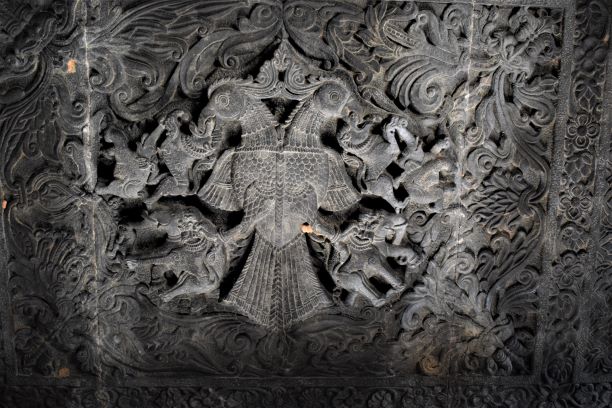 One can find the carvings and sculptures of Gandaberunda in many temples. One such beautiful carving of Gandaberunda is present in the Rameswaram temple in Keladi, located in the Shimoga district of Karnataka. Nayaka rulers built this beautiful temple in the 1500s. Three separate shrines dedicated to Lord Rameshwara, Goddess Parvathi and Lord Veerabhadra are present in this temple. An exquisite carving of Gandaberunda is found in the ceiling of the Veerabhadra shrine.
One can find the carvings and sculptures of Gandaberunda in many temples. One such beautiful carving of Gandaberunda is present in the Rameswaram temple in Keladi, located in the Shimoga district of Karnataka. Nayaka rulers built this beautiful temple in the 1500s. Three separate shrines dedicated to Lord Rameshwara, Goddess Parvathi and Lord Veerabhadra are present in this temple. An exquisite carving of Gandaberunda is found in the ceiling of the Veerabhadra shrine.
The Chennakeshava temple, or Keshava temple, located at Belur ( Hassan district) in Karnataka, is a 12th-century temple built by the Hoysala empire. It is also a UNESCO World Heritage site with beautiful carvings and sculptures. The temple features a carving of Gandaberunda in the ' Chain of Destruction ' scene. The carving sequence depicts a deer being preyed upon by a python, which is lifted by an elephant. The elephant is attacked by a lion, which in turn gets eaten by Sarabha. Finally, Gandaberunda is depicted at the top, holding the Sarabha.
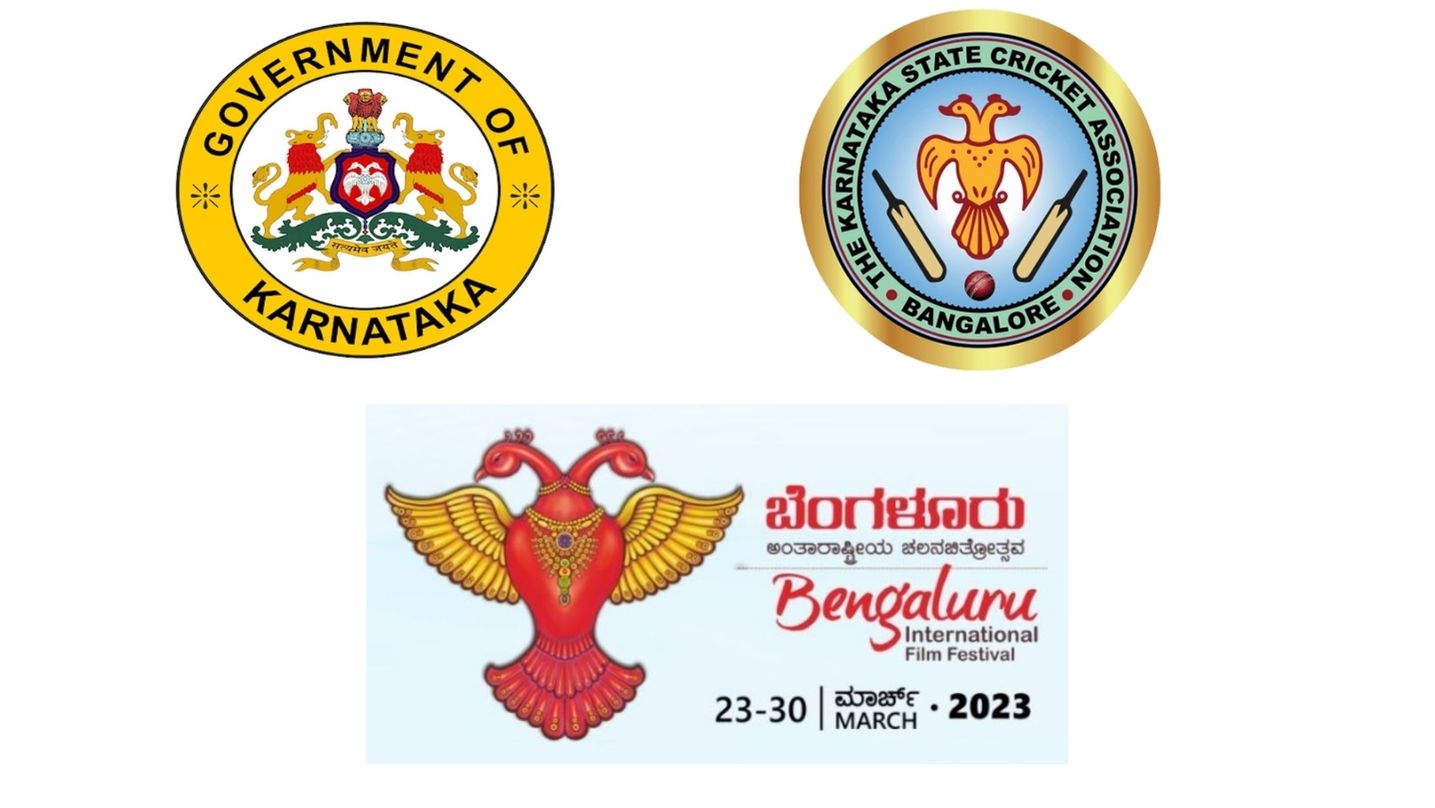 Gandaberunda is found as a decorative motif on the ceiling of the Brihadeeswara temple of Thanjavur ( in the Nandhi Mandapam). The paintings on the ceiling of the Virupaksha temple at Hampi have an illustration of the double-headed Gandaberunda.
Gandaberunda is found as a decorative motif on the ceiling of the Brihadeeswara temple of Thanjavur ( in the Nandhi Mandapam). The paintings on the ceiling of the Virupaksha temple at Hampi have an illustration of the double-headed Gandaberunda.
The temple in Balligavi has a sculpture of Gandaberunda with a gigantic human torso with two arms and legs while having two avian heads. Here, the Lord is worshiped as Lord Berundeshwara.
Yadagirigutta, in Nalgonda District, has stories associated with Gandaberunda as well. The origin of this temple is found in the Skanda Purana. Saint Yada Maharishi performed tapas for Lord Narasimha, and the Lord revealed himself through five avatars - and blessed the saint. These five avatars are - Jwala Narasimha, Yogananda Narasimha, Ugra Narasimha, Gandaberunda Narasimha and Lakshmi Narasimha. This place is also called Pancha Narasimha Kshetram.
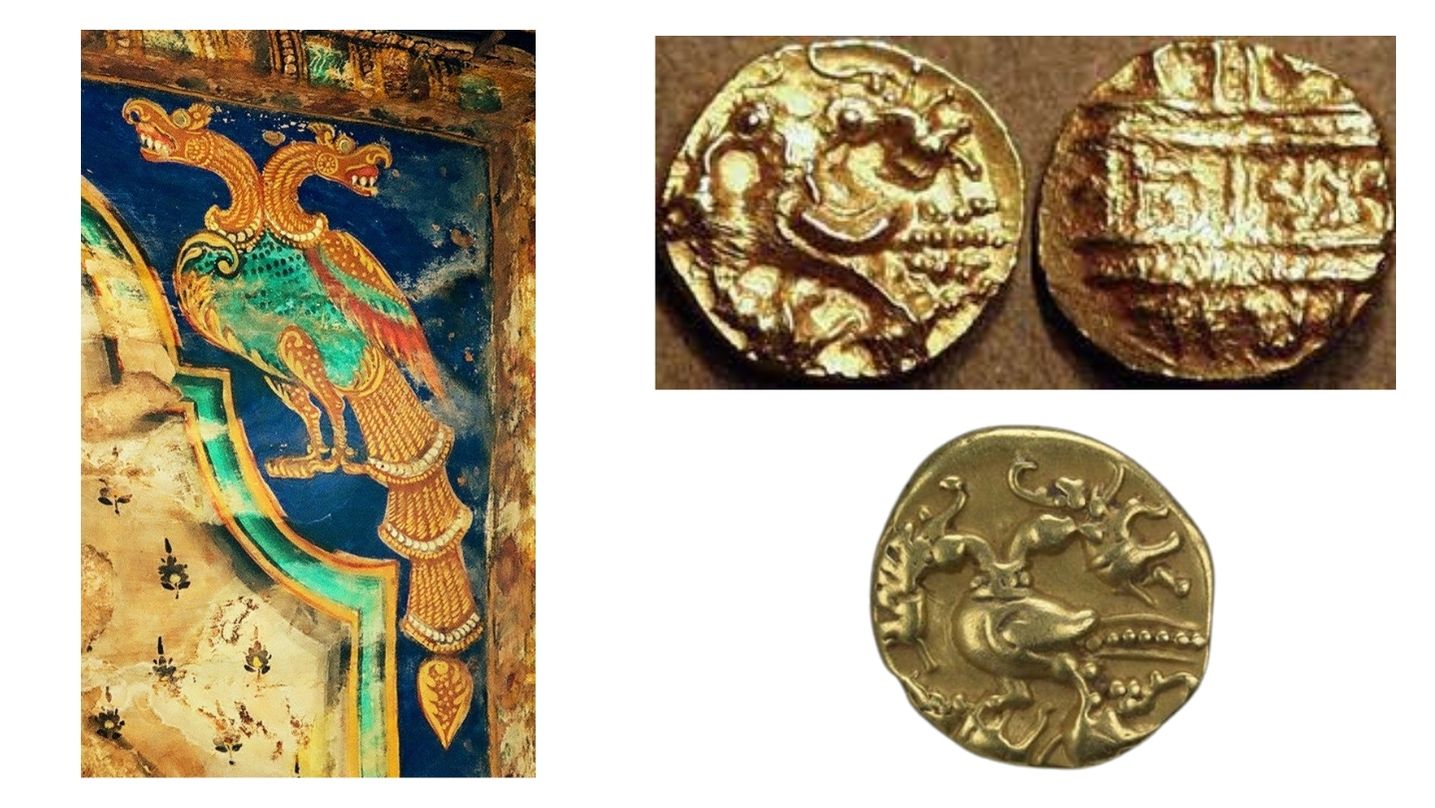
Gandaberunda as Insignia
The unique avatar of Lord Vishnu was (and is still) used as a significant Insignia. The Kings of Chalukya, Hoysalas, Nayakas and Wadiyars used the motifs of Gandaberunda in their crests and seals. The great king of Vijayanagar, King Achyuta Deva Raya ( the brother of King Krishna Deva Raya), was perhaps the first to use Gandaberunda on one side of the gold coins ( also called Gadyana). These coins represented the four enemy sultanates ( strong like the elephants) of Vijayanagara. The message was that the empire of Vijayanagara was as powerful as the mighty bird which held its elephant-like enemies within its clutches. His Highness, Sri Chamarajendra Wadiyar instituted the order of Gandaberunda in 1892 to honor artists, writers and exemplary citizens in the public field.
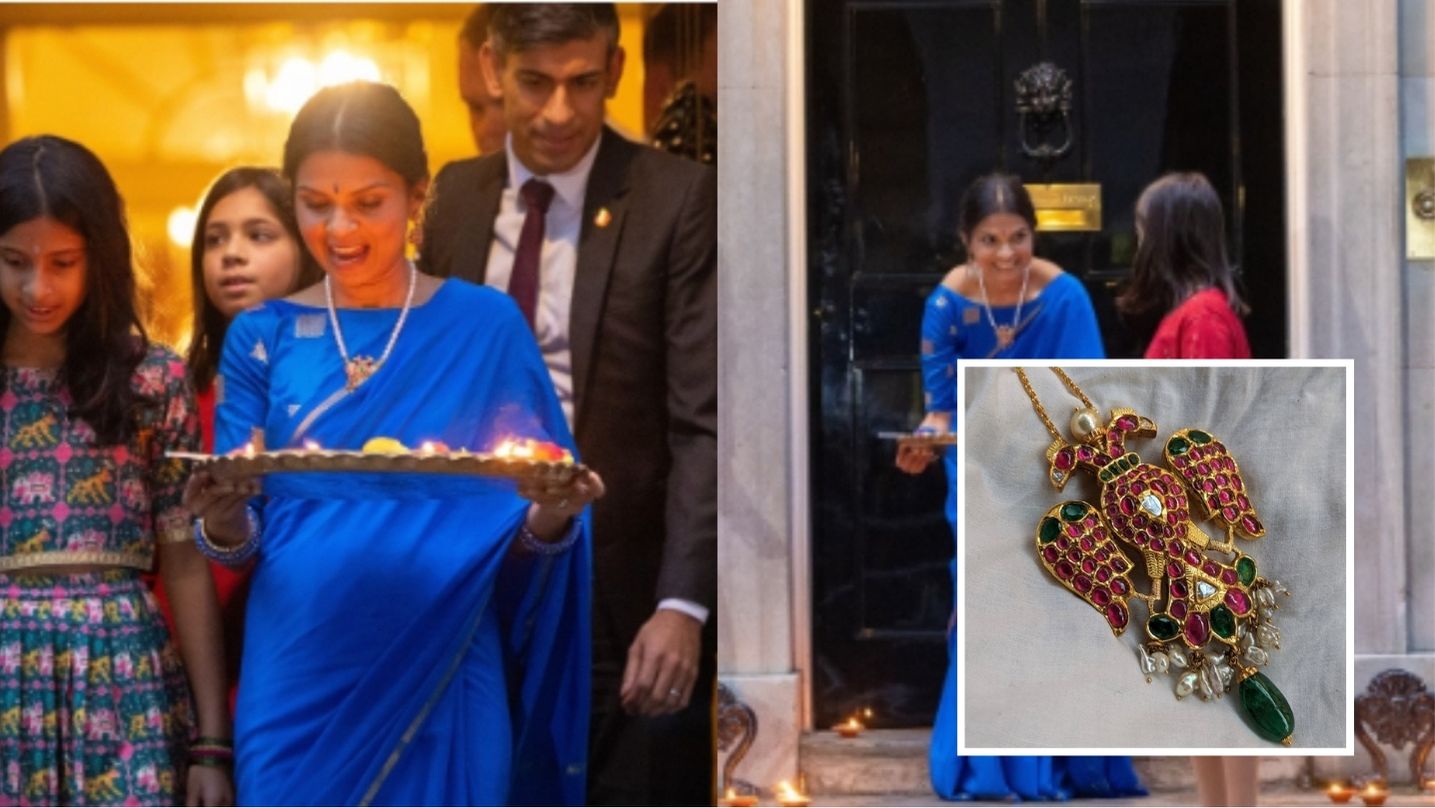
Today, Gandaberunda is a proud and the official symbol of the Karnataka state government. The famous Bengaluru International Film Festival has adopted Gandaberunda as its logo. The motif of Gandaberunda is also used exquisitely in jewelry as pendants, earrings and hip chains. Not long ago, the first lady of the UK, Mrs Akshata Murty, wore a saree and Gandaberunda necklace during the Diwali celebrations in the UK.
 Vaishnavi Gurusankar is a passionate educator, a wife and a mother. She has over a decade of experience as an educator and has been closely working with teachers and children of all ages. She is also an active parenting blogger and founder of Magical Unicorn, an exclusive parenting blog founded on Indian ethos, values and stories at its core. She has also authored the book "Bharatyam : Science behind Hindu Practices & Way of Life"
Vaishnavi Gurusankar is a passionate educator, a wife and a mother. She has over a decade of experience as an educator and has been closely working with teachers and children of all ages. She is also an active parenting blogger and founder of Magical Unicorn, an exclusive parenting blog founded on Indian ethos, values and stories at its core. She has also authored the book "Bharatyam : Science behind Hindu Practices & Way of Life"
NEXT ARTICLE

At the southernmost tip of this mesmerising ensemble lies the majestic Great Nicobar Island, boasting an impressive landmass of about 910 square kilom...

Bharath has always been a land traversed by spiritual masters/ Guru since time immemorial. These spiritual masters have always upheld the core princip...

South India contains its fair share of unique pilgrimage centres. These divine places of worship have a prominent Sthala Purana, devoted followers, di...